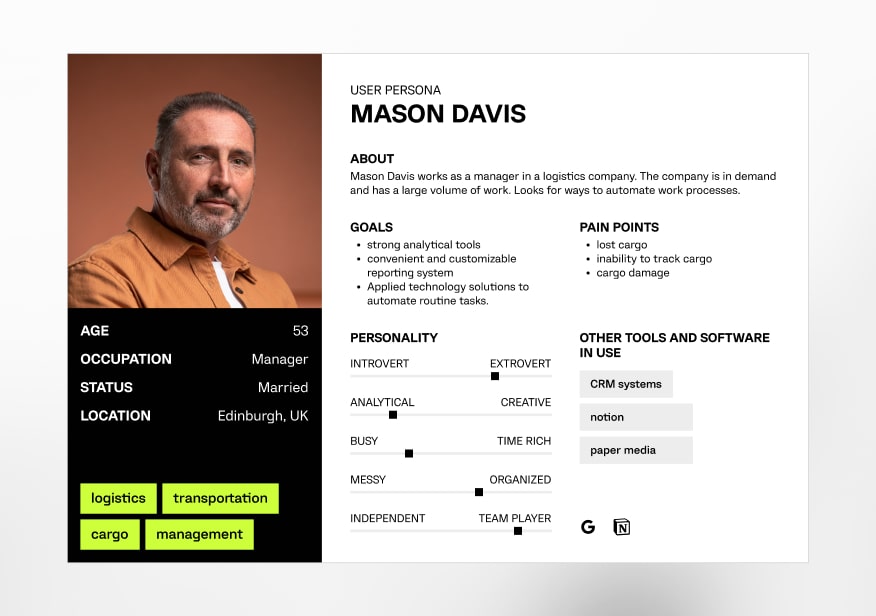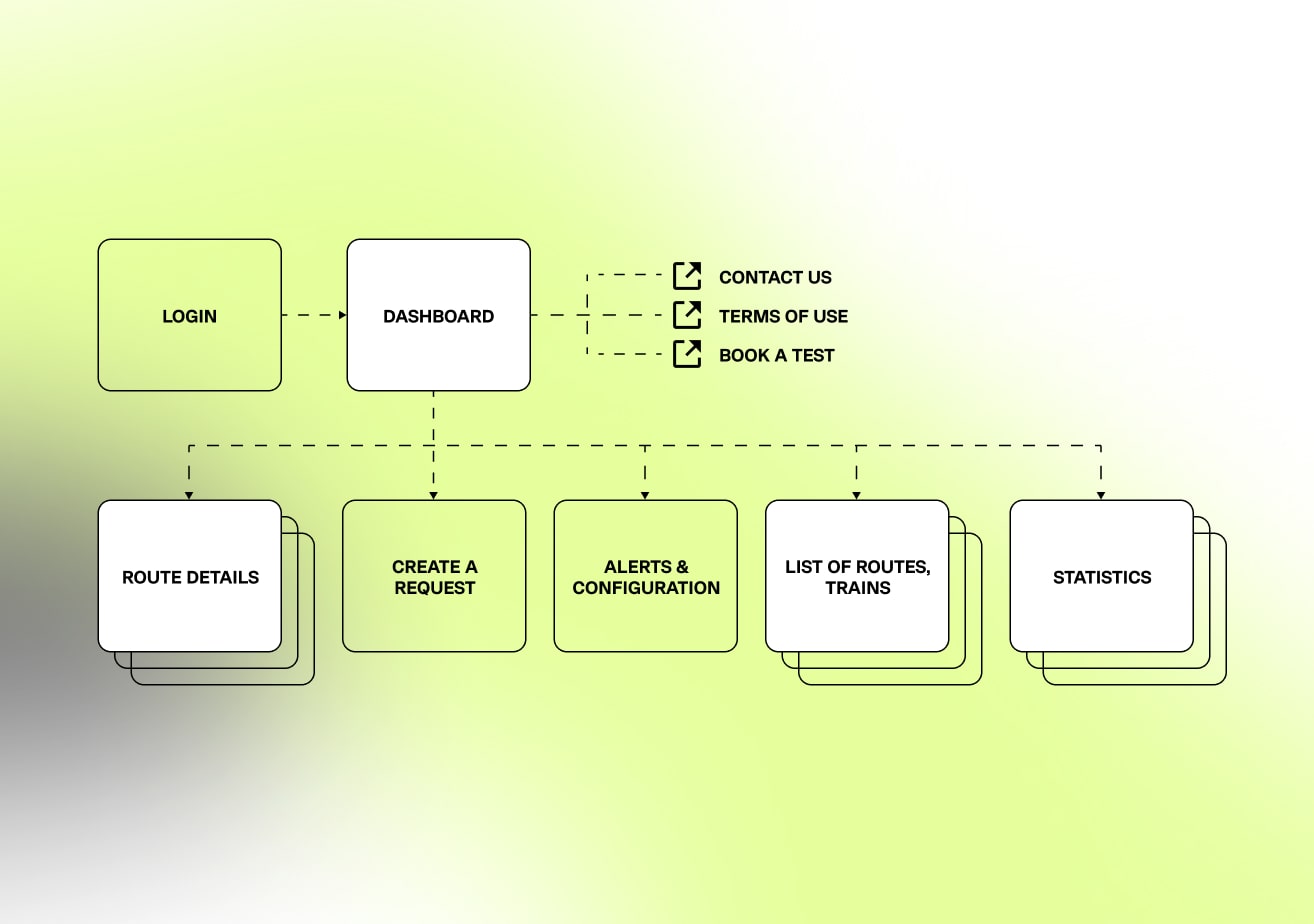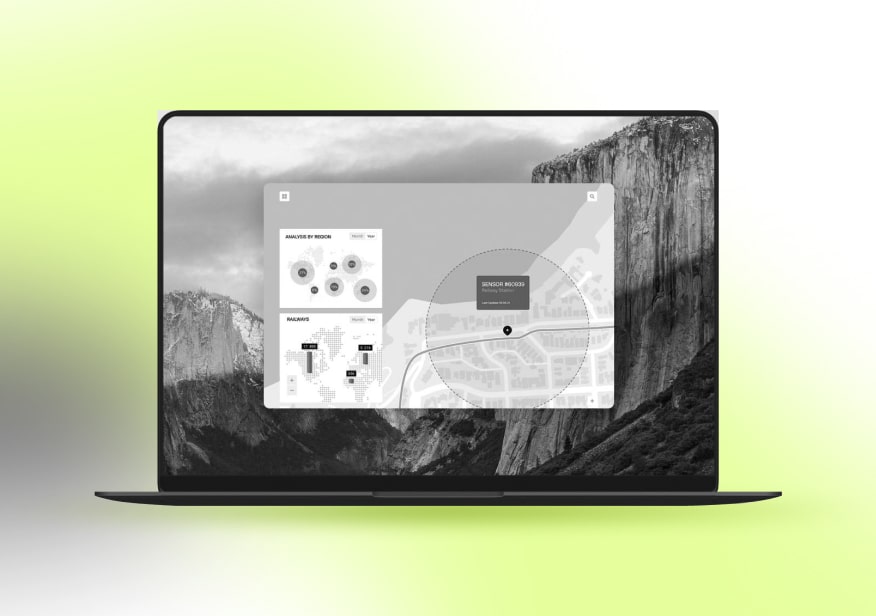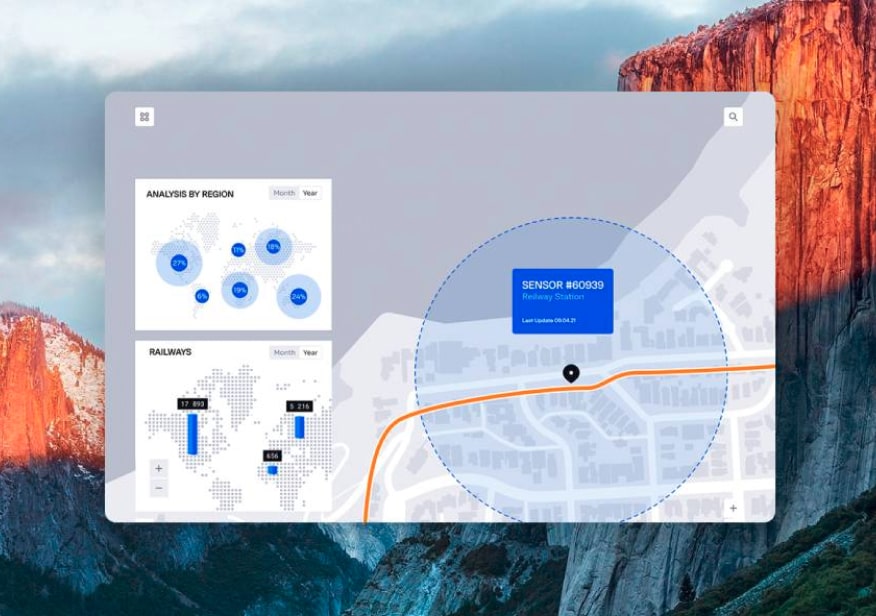Our team assisted a Western European rail operator in developing a system for real-time cargo fleet positioning. By incorporating safety parameter monitoring and instant alerts for deviations, the client received streamlined fleet management and reduced manual checks. Utilizing the MQTT protocol ensured reliable data transmission and top-notch security, providing our client with IoT-based solution for their cargo operations.
The client is a major passenger and cargo transport operator active in Western Europe. The company operates high-speed, regional and city trains, and also has a franchise for national transport. The Company is a major player in the rail cargo market, with an extensive route network and rolling stock fleet.
The lack of a real-time wagon monitoring system made it impossible for the customer to track the location and condition of the cargo. These limitations made it difficult to respond quickly to problems and prevent accidents. The client had idle wagons and reduced productivity.
The client wanted to implement a wagon monitoring system, to create an early warning system of potential safety hazards using sensors and detectors.
Our engineers have developed a real-time freight tracking system that provides operators with accurate positioning of cargo wagons. This also includes data on important safety parameters: volume, pressure, and temperature. The system automatically notifies operators when measured parameters deviate from the norm.
The main components of the system include:
The decision to implement IoT in cargo wagons tracking resulted in a reduction in the need for manual inspection of wagons. Before the implementation of the system, 2 manual inspections per day were required. After the implementation of the system, the number of manual inspections decreased. The customer also became more aware of the condition of the wagons. The system provides 24/7 monitoring of safety parameters such as volume, pressure and temperature.
The client conducted a thorough selection process before choosing us as their partner for this project. They actively researched potential partners through various channels:
The client considered proposals from several vendors. After a comprehensive evaluation, the client selected Computools for several key reasons:
Before contacting Computools, the client conducted research on the Internet. It also consulted experts in the cargo transport industry. Our company took part in the tender by carrying out a small related project, thus demonstrating our expertise. The two sides started cooperation.
An analysis of existing systems on the market showed that a comprehensive solution was required that would provide real-time monitoring of cargo traffic, predict potential security threats and facilitate rapid response to problems. The technical plan of the project included a systematic algorithm of step-by-step development, testing and implementation of individual components of the platform.
We created a smooth and reliable system for monitoring, processing and storing complete data on trains, timetables, congestion and speed. Our workflow involved several steps. Sensor-generated information from railways and stations was fed into storage facilities and visualised using tables or a special method; then in-depth data analysis was performed, the results of which were carefully documented in reports and distributed via predefined communication channels to specific recipients or systems.
Computools helped the client make several key decisions during the project:
In the context of this case, the design phase encompassed a range of tasks aimed at creating an intuitive, visually appealing, and efficient user interface. The design tasks included

Creating detailed fictional profiles representing diverse users for informed design decisions

Illustrating the platform's structural hierarchy and navigation for intuitive user journeys

Drafting skeletal representations to visualise layout and functionality, guiding subsequent design

Crafting a visually cohesive, intuitive design for an engaging and efficient user experience
JAVA
We chose Java as the primary programming language because of its portability, ease of use, and ability to facilitate modular and reusable code. Java's versatility made it an ideal choice for developing a high-load, safety-critical system. With a rich set of libraries, extensive community support, and platform independence, Java became the backbone of the project, ensuring reliability and scalability.
APACHE WEB SERVER
The Apache Web Server, an open-source and highly customizable server, was selected to underpin the platform. We chose Apache because of its stability and security features, providing a robust foundation for web applications. Its flexibility allowed for tailored configurations, meeting the specific requirements of the railway logistics system.
APACHE SPARK
We opted for Apache Spark, a powerful data processing framework, to handle large datasets efficiently. We chose Apache Spark for its ability to distribute tasks across multiple computers, ensuring the seamless processing of vast amounts of data generated by sensors in railway infrastructure. Its robust capabilities in data analytics and processing derived valuable insights from the extensive information collected.
MONGODB
We selected MongoDB for its ability to organize data as JSON documents, facilitating real-time data analysis—a critical requirement for monitoring and analyzing train movements, schedules, and safety parameters. Its efficiency in handling dynamic and evolving data structures contributed to the agility of the system.
We chose the Scrum methodology to handle all the nuances of the development process. The iterative and incremental approach allowed the team to adapt to changing requirements, ensuring flexibility and agility throughout the project. Regular collaboration with the client and continuous feedback are integral components of the Agile methodology.
As part of the overall Agile framework, the Scrum methodology was utilised to provide a structured approach to project management. The project was run through a series of sprints, each consisting of a defined timeframe and a list of tasks to be completed. The Scrum model facilitated planning meetings, where the team identified specific tasks for the upcoming sprint, and sprint demonstrations, which gave stakeholders a tangible view of the project’s progress.


“Computools was selected through an RFP process. They were shortlisted and selected from between 5 other suppliers. Computools has worked thoroughly and timely to solve all security issues and launch as agreed. Their expertise is impressive.”